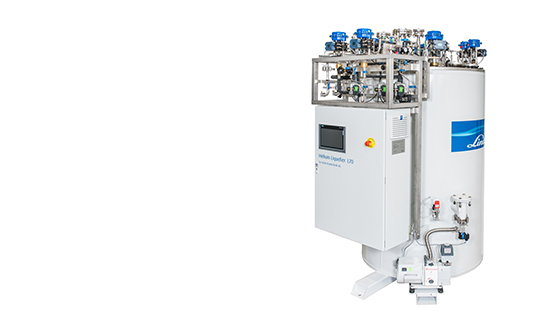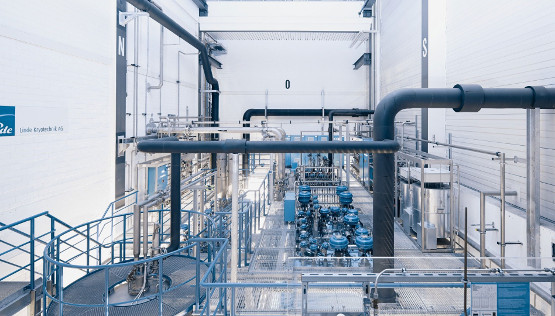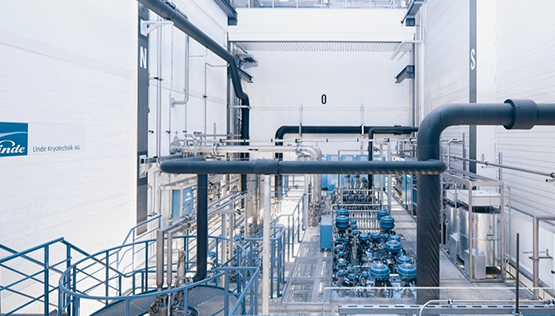Special refrigeration systems
Linde Kryotechnik develops and builds refrigeration systems to fit customers’ requirements.
Research facilities at renowned universities and institutes, such as that conducted at CERN in Geneva, the MPI in Greifswald, JLAB in Newport News, Fermi-Lab near Chicago, MSU in East Lansing, KEK in Tsukuba, ESS in Lund or DESY in Hamburg, require low-temperature cooling that can be delivered by large cryogenic refrigeration units only.
Linde Kryotechnik develops and builds refrigeration systems to fit customers’ requirements. Efficiency, punctuality, and reliability are our watchwords. Our credentials are represented by special helium refrigeration systems with a performance rating that ranges from several hundred to well over 18,000 W at a mean temperature of 4.5 K, with an open-ended upper limit.




